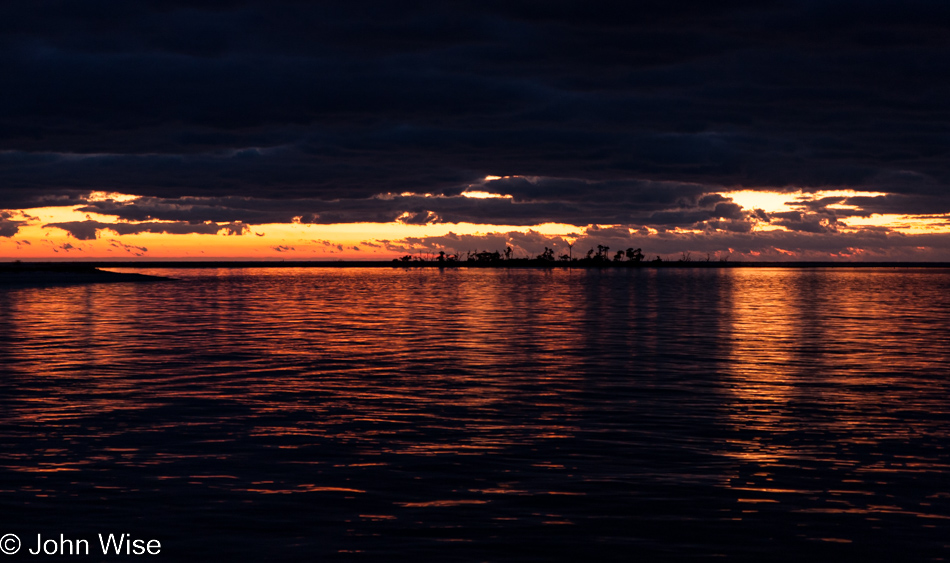
It was still dark out around 5:30 when we awoke. In only a few minutes, the first blue-gray twilight would begin to illuminate the morning sky. A thick cloud cover gave doubt whether we would see the sunrise at all, but as the sky filled with a deep red and orange glow, we were glued to the dock, watching the day come into being. As the light spread across the calm, warm waters of the Gulf, an occasional fish would break the surface, leaping for something unseen by us. Mesmerized, we sat there while the world turned from darkness to beauty.
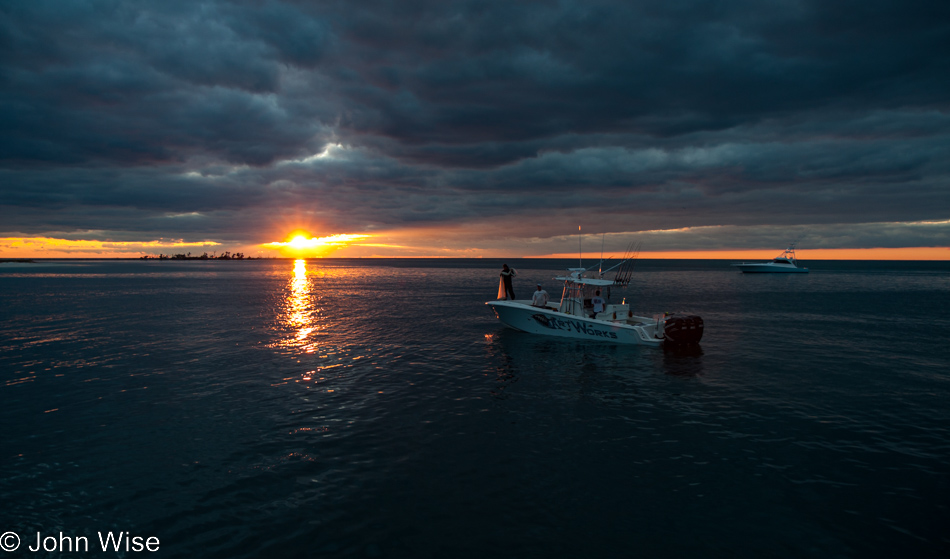
An hour later and still, we sit dockside, gazing eastward at the oncoming day. The fishermen who also spent the evening on the Dry Tortugas have begun to stir and will soon be gone.
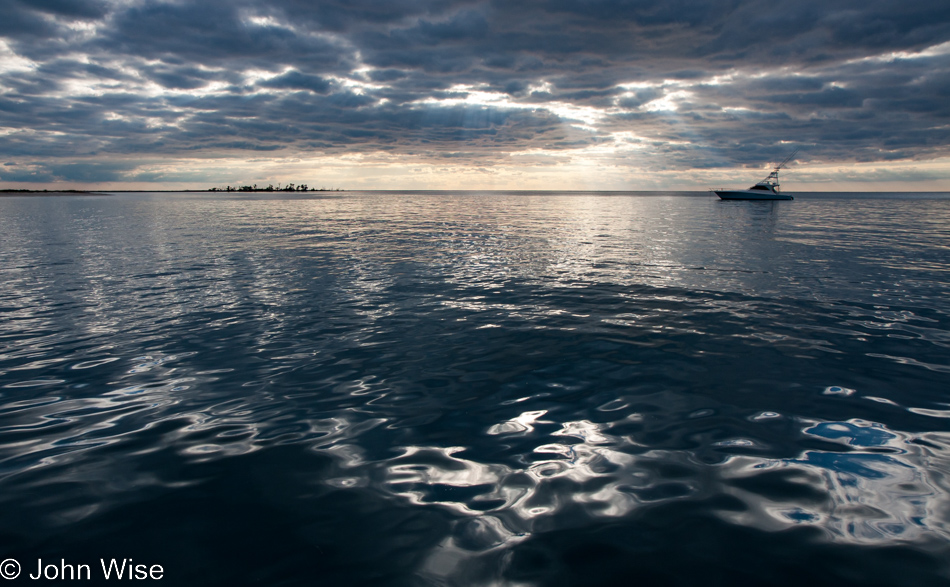
Fortunately for us, the cloud cover was to break up after hanging around the early part of the day to lend dramatic flair to the morning sky and reflective ocean waters. With the dawn comes the idea we could easily have spent days here on this little island paradise.
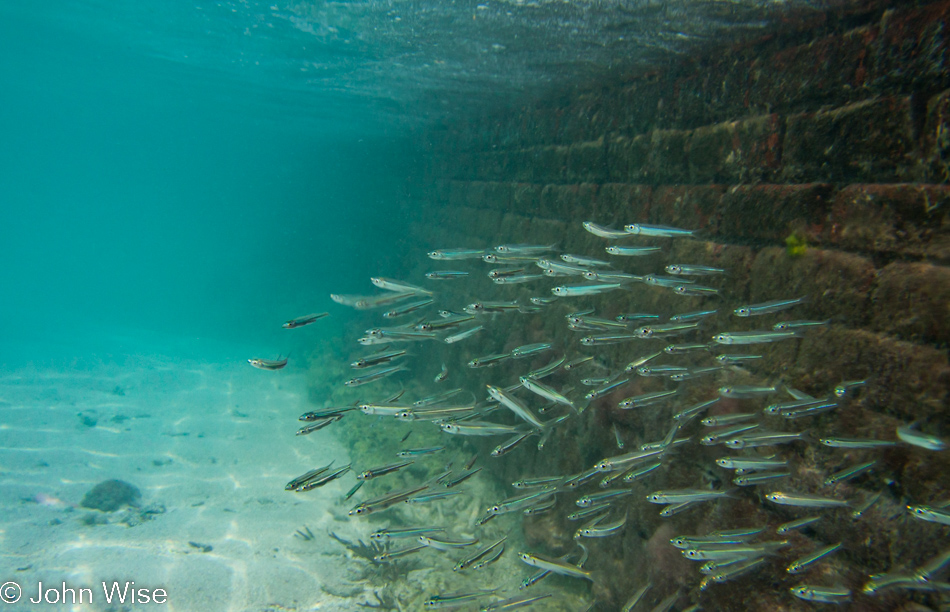
By 9:00 a.m., the sun had pushed the clouds to the side, and it was time to get in the water. This is where we would stay until we turned to prunes or got too cold. Our first venture into the sea was in front of our now packed-up campsite on the western shore. Along the wall of the moat, there are more fish here today than yesterday. The waters are also calmer, as is the wind, so visibility is greater, too, making the first swim of the day that much better. Slowly, we float along, watching fish watching us.
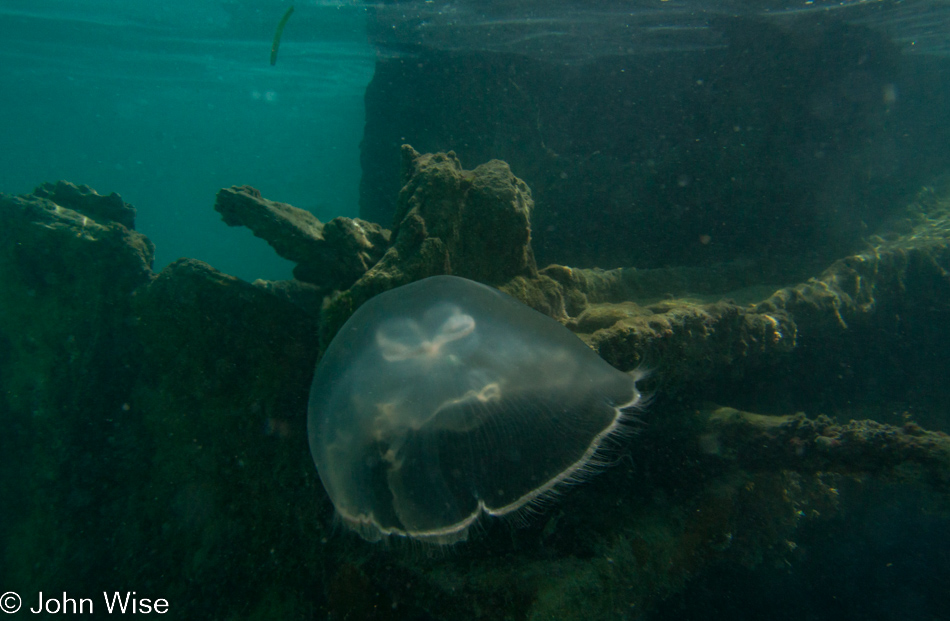
Well, float along and avoid the jellyfish.
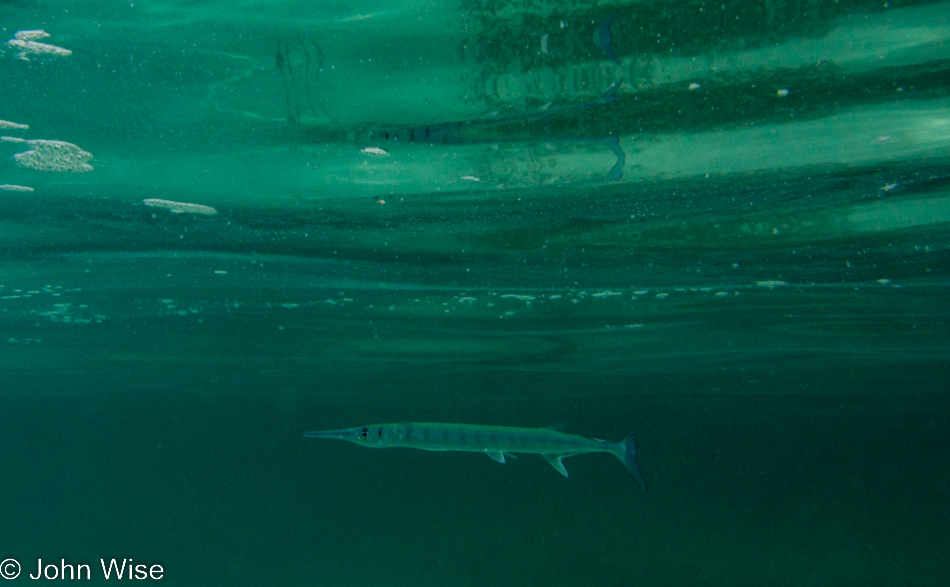
The aptly named Needlefish.
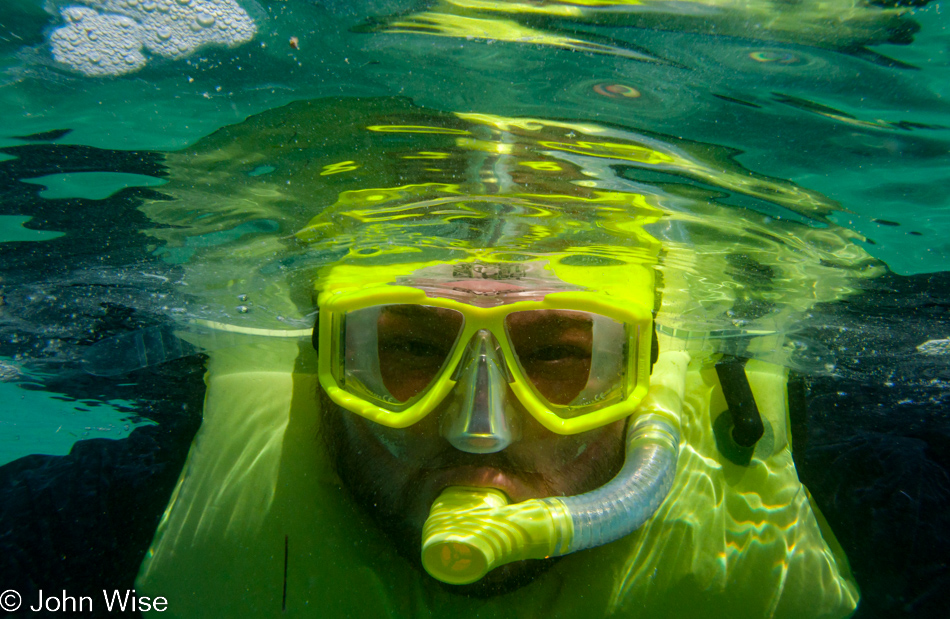
What is it about this photo that is so unflattering? Is the snorkel in my mouth, the squinty eyes, or that I might be confused with a sea monster?
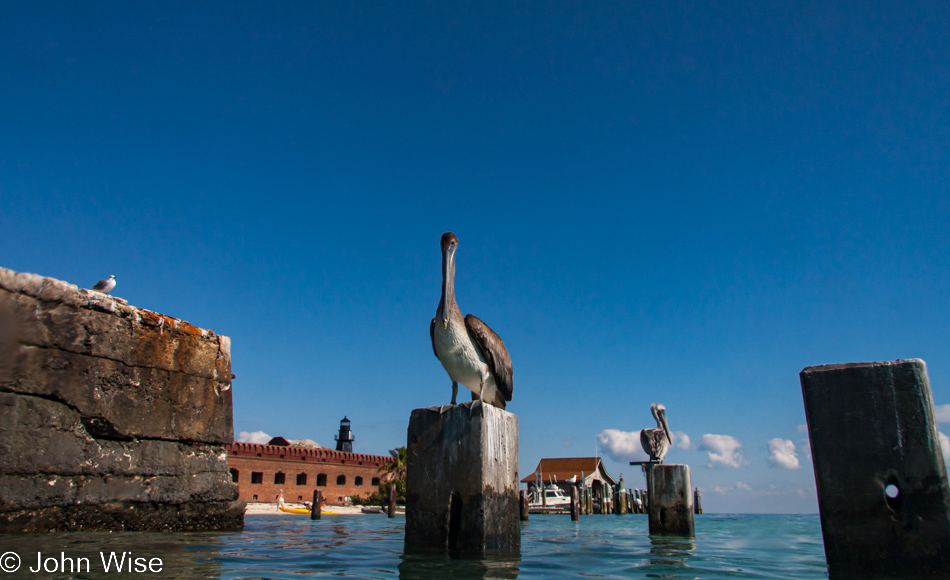
Come here, Mr. Pelican, I have a little snacky for you! While we did get a photo of a pelican entering the water, it was a bit too abstract and blurry to share, so instead, I present you this guy looking at the strange thing emerging from the depths to take its photo.
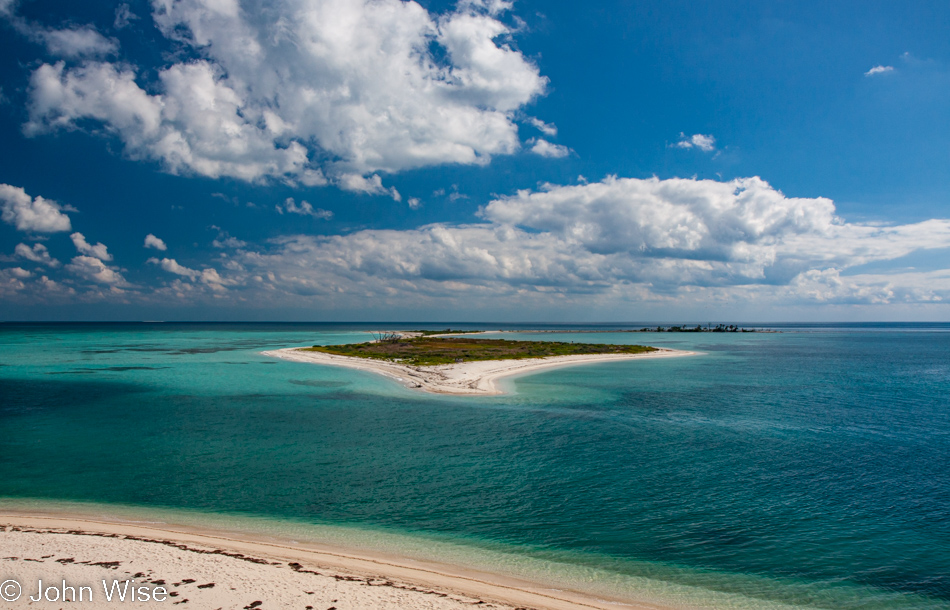
Cold and pruney, it was time to warm up with a walk in the sun atop Fort Jefferson for one more view of the azure waters surrounding us.
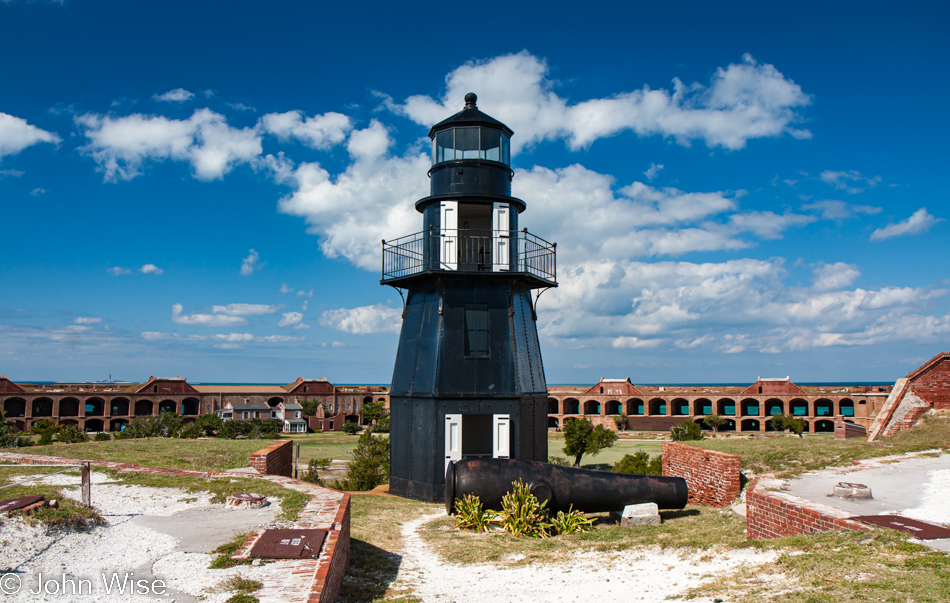
What an incredibly small island this really is! We know it’s only 16 acres, but if you look at a satellite image, you’ll better appreciate just how small. You’ll also see why the taller Loggerhead Lighthouse was built, as the water out here is very shallow.
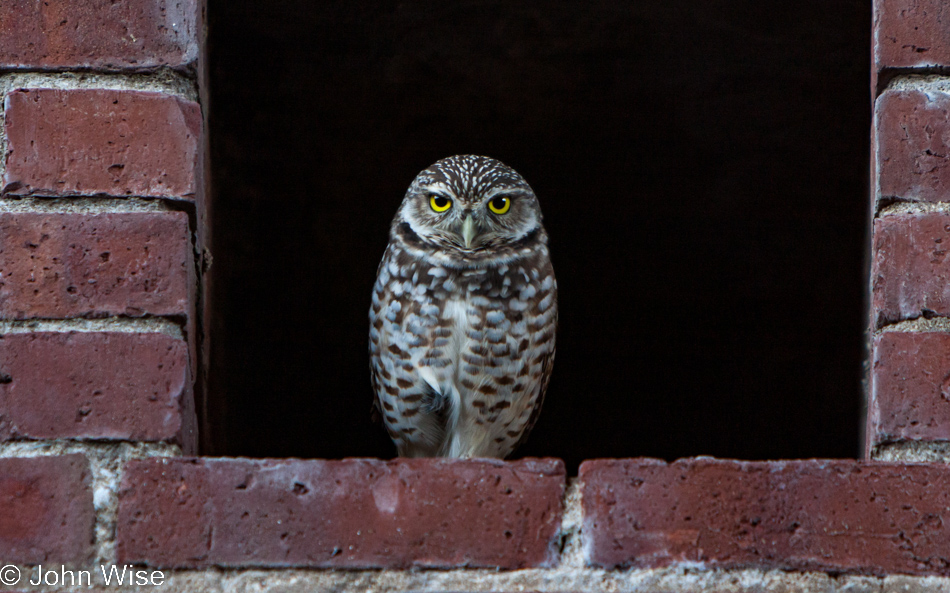
Here we are 70 miles out to sea, and I would have thought it was strange to see an owl this far away from the mainland, but with crabs and maybe some fish in the shallower waters along with rodents and insects, it’s finding enough to keep it healthy. Could it possibly have a mate out here?
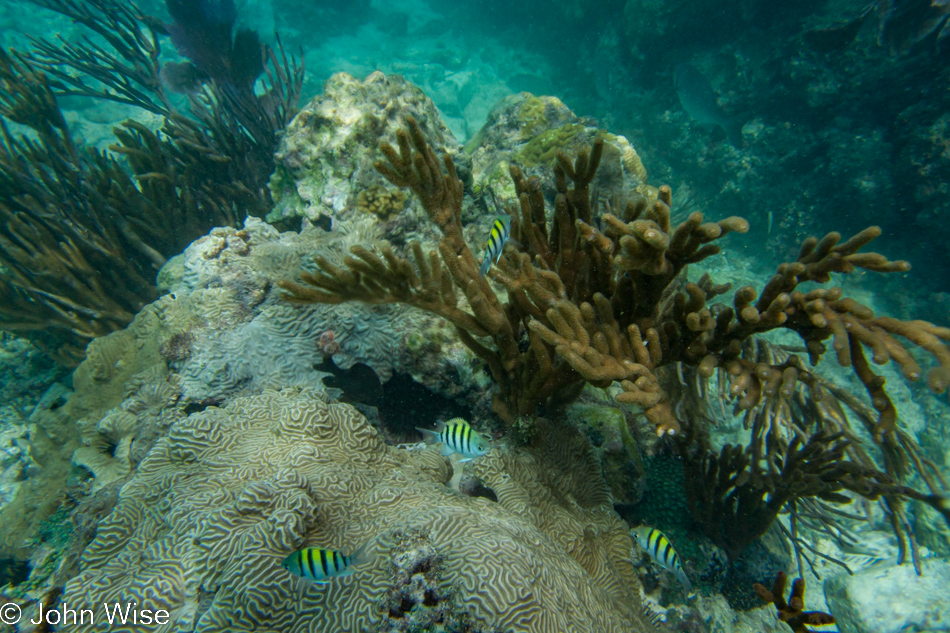
We try to ignore the time as it won’t be long before a boat arrives that will take us away. Until then, we will bask and try to imagine our eventual return when maybe we could spend three or four days and nights out here. It’s not long before we are both warm and dry, conditions that demand we return to the water.
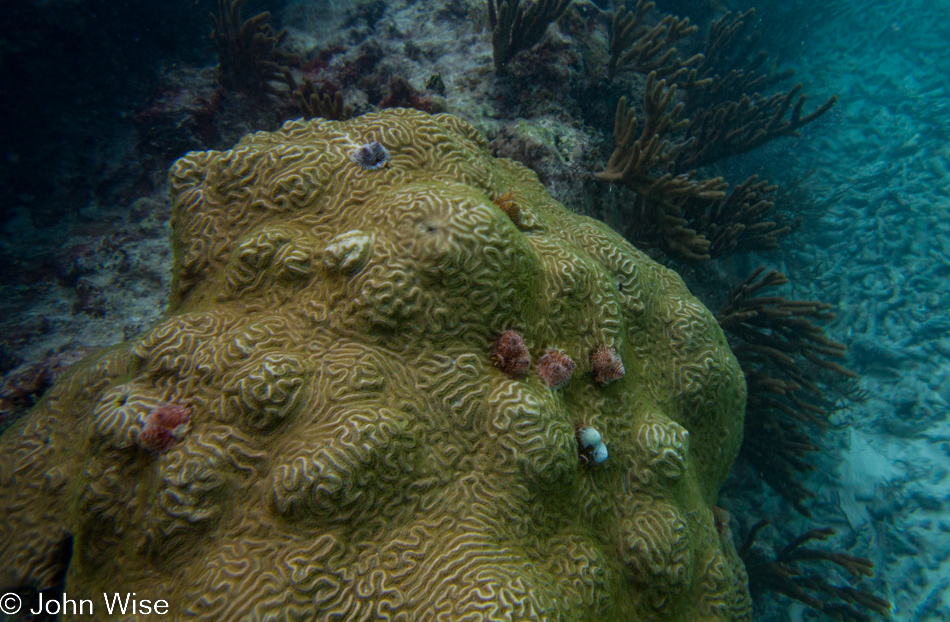
Caroline takes charge of the camera, giving me the opportunity to stop taking photo after photo and freeing my hands to swim with only my sense of awe working. While she swims further out along the wall, looking for bigger fish to photograph, I meander, spending many a minute studying conch, urchins, and corals. The sun glimmers on the white sands of the ocean floor, and light dances, darts, and flashes on the sides of fish turning as though this were a performance for the big floating stranger looking to be dazzled with the show of nature.
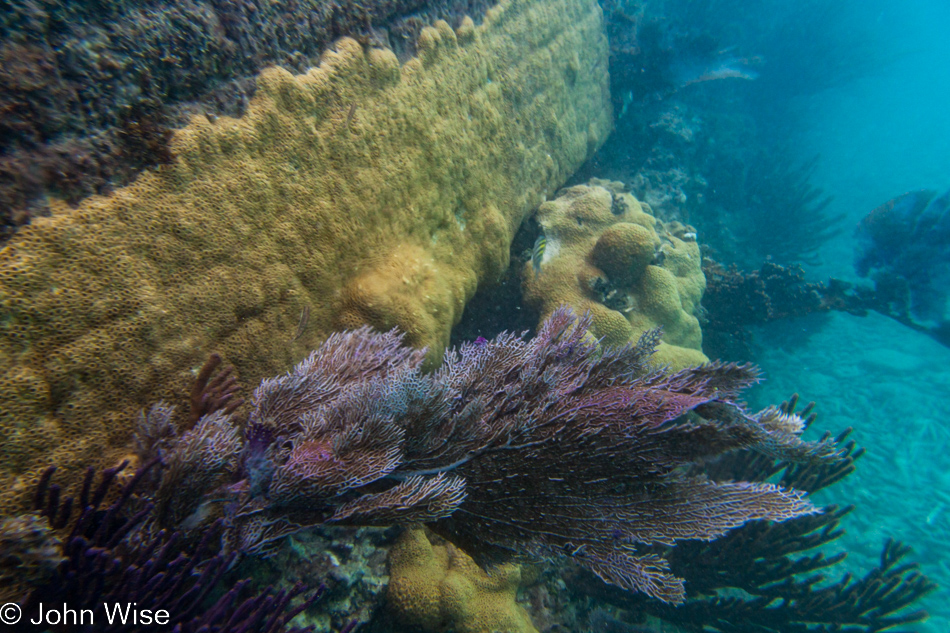
Our next snorkel venture had us back on the western shore, except this time, Caroline wanted to try going as far as she could around Fort Jefferson. She made it halfway before the winds picked up again, and the choppy water towards the north side of Garden Key had her turning around. Out here on the far side of the moat, the corals are larger, the fish more abundant; we had even seen a leopard shark here earlier in the day on a walk around the moat wall. Sadly, Caroline didn’t see the shark while in the water, but she did get to swim up to a pufferfish. But that elusive pufferfish didn’t stick around for many photos, and the ones Caroline took were too blurry to share here.
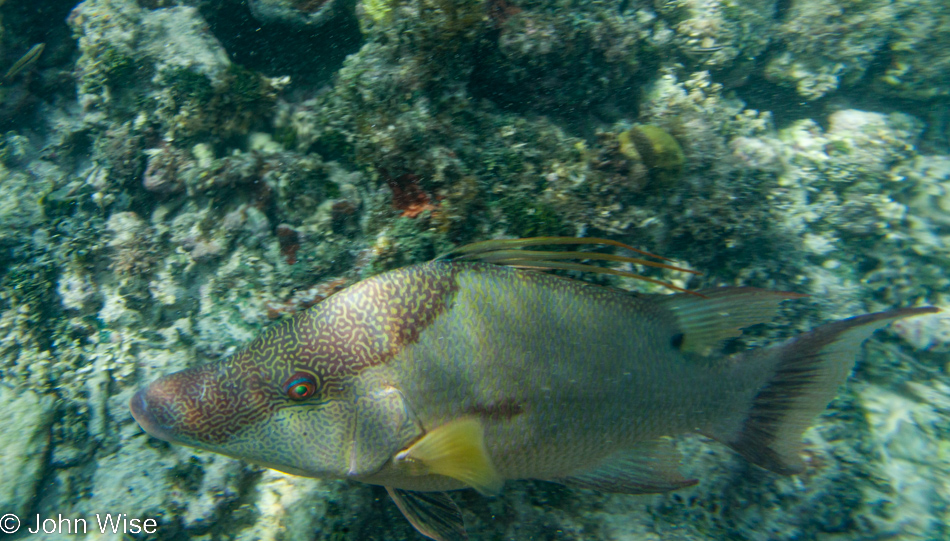
But she really made a serious effort to follow this hogfish around and so I present you with the best of the bunch. From the moat wall, we made the second trip of the day over to the old pilings towards the south of the island. These pilings were once part of a dock that had been used for loading coal over one hundred years ago, but today are a coral sanctuary and a favorite habitat for fish – pelicans too; we watched from below as pelicans dove in the water looking for a quick bite.
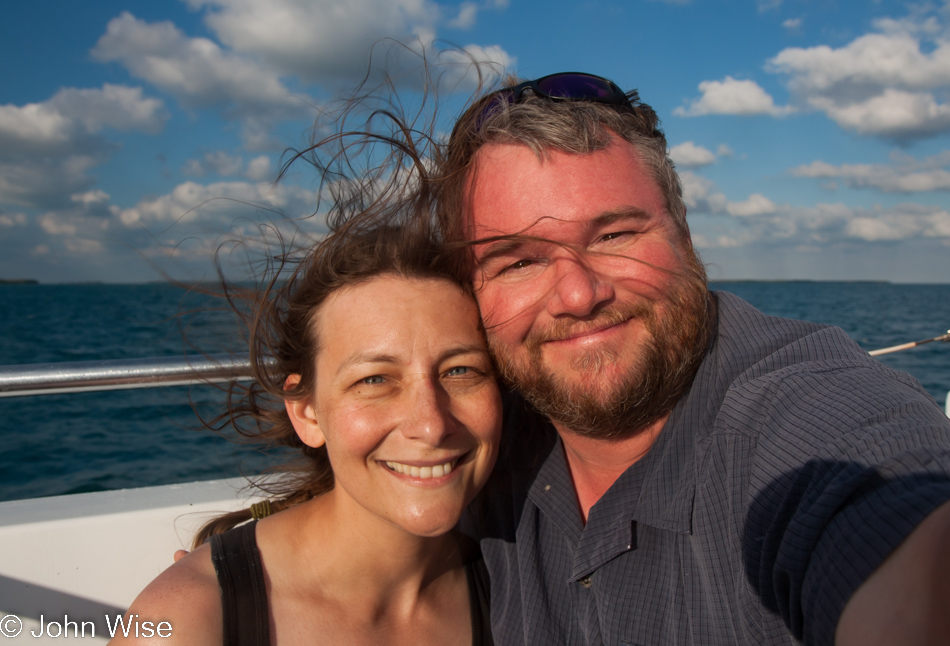
The time we traded to be on Garden Key here at the Dry Tortugas National Park was over too soon. Our memories will be tied to those blue waters and blue skies, wrapping this tiny 16-acre (6.5 hectares) island in a beauty these pictures poorly represent. For a little bit more than 24 hours, life was near perfect.
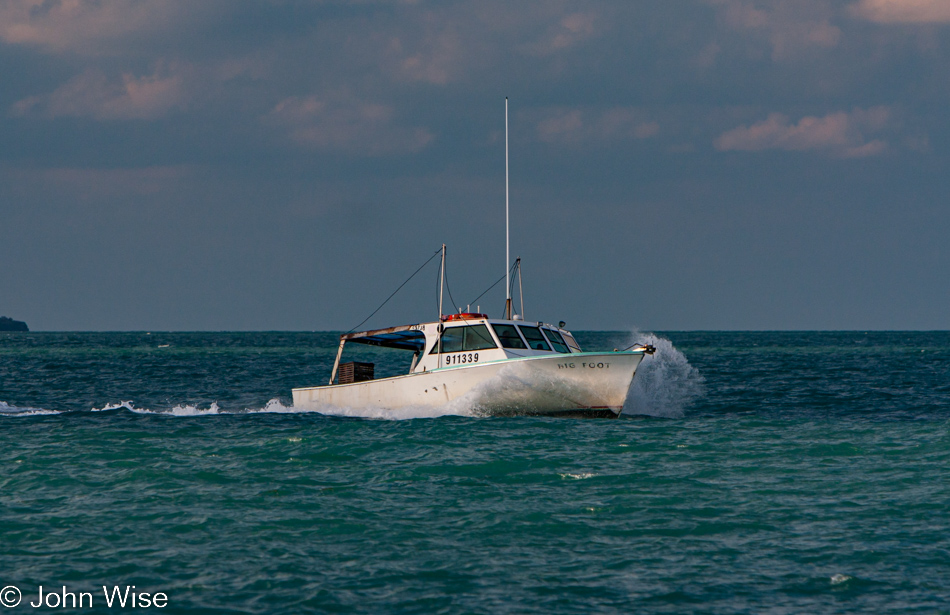
Wait a minute, is that the S.S. Minnow? I tried yelling over to get Gilligan’s attention but I don’t think he could hear me.
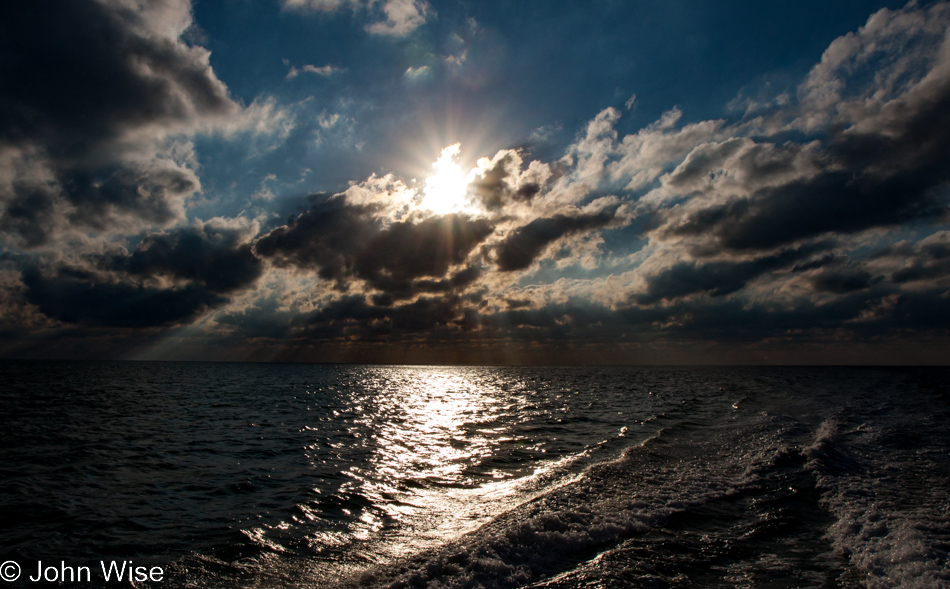
As the sun drew low in the sky, we would soon approach Key West. Landing, it was as though we were transported into New York City with thick crowds, cars, noise, and buildings all around us. Truth is that Key West itself is a small town with its own laid-back style, but coming from the solitude of that island, there was a moment when even this felt like a metropolis. I can only wonder how difficult it is for those who spend weeks out there to readjust to “normal” life.